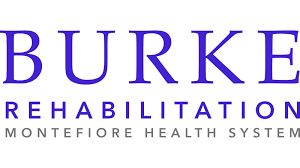
Dr. Linda Levine Madori
Professor, Artist, Researcher, TTAP method innovator
Member since 2007
Chappaqua, NY, US
1. What makes your program unique?
The TTAP Method® is a multimodal approach grounded in the past decade of brain research, which has discovered that the brain has the ability to grow in mass and density when repetitively stimulated. Coupled with these recent neurological discoveries, the TTAP Method® identifies and systematically structures specific learning styles (Bloom’s Taxonomy), which are identified in each program protocol. Therefore, theTTAP Method® is the first of its kind to identify, assess, plan, and implement therapeutic interactions that can be documented through organizational charts and graphs and most importantly replicated, thus providing the identified “best practices ” of the National Alzheimer’s Association.
The TTAP Method® systematizes through a themed, centered approach of the therapeutic use of music, guided imagery, painting, movement, poetry, sculpture, writing and poetry, photography, themed events, food and sensory programs. Research on the TTAP Method® has been published in three peer reviewed journals demonstrating significant positive correlations to increase in cognition, social stimulation, and enhance overall quality of life in individuals diagnosed with mild, moderate, and advanced stages of Alzheimer’s disease.
In 2009, I developed TTAP Method® Certificate Training Programs for healthcare professionals, and TTAP Method® Training Programs for caregivers. The TTAP Method® provides the answer to developing person-centered programming for the well elderly, community day programs, assisted living, Skilled Nursing Facilities, Gero-psychiaticunits, senior housing, and family and caregiver educational forums.
2. What value do you see in being a member of the Society for the Arts in Healthcare to meet goals for your program?
The Society for the Arts in Healthcare provides people with the newest and latest information in arts in healthcare. I am able to collaborate with people in my area of expertise and to be part of many different special interest groups. The organization is also very influential in disseminating research and members’ professional activities through the website and announcements.
3. What advice would you give to someone new to the field?
For someone who is new in the field, it is imperative to be connected to regional, national, and international organizations. Be aware of the newest research and publications that are out. It is also important to create professional alliances. The Society in Arts in Healthcare helps in all of these areas.
4. What keeps you motivated to do the work you do?
What keeps me motivated is that I am changing thousands of people’s lives through teaching, training, and research of the TTAP Method®. TheTTAP Method® has been proven in 11 clinical studies demonstrating that my methodology enhances cognitive functioning and psycho social well-being. Another motivating factor is when I meet people who tell me that they have been doing the TTAP Method® and, as a result, have seen phenomenal results with their patients and their students.
—-
To learn more about Dr. Linda Levine Madori’s work and the TTAPMethod® visit www.ttapmethod.com. Her next book, “Transcendence In Dementia Through the TTAP Method®: A New Psychological Approach to Art, Brian and Cognition,” will be available through Dr. Levine Madori’swebsite or through Health Professions Press in June 2011.









